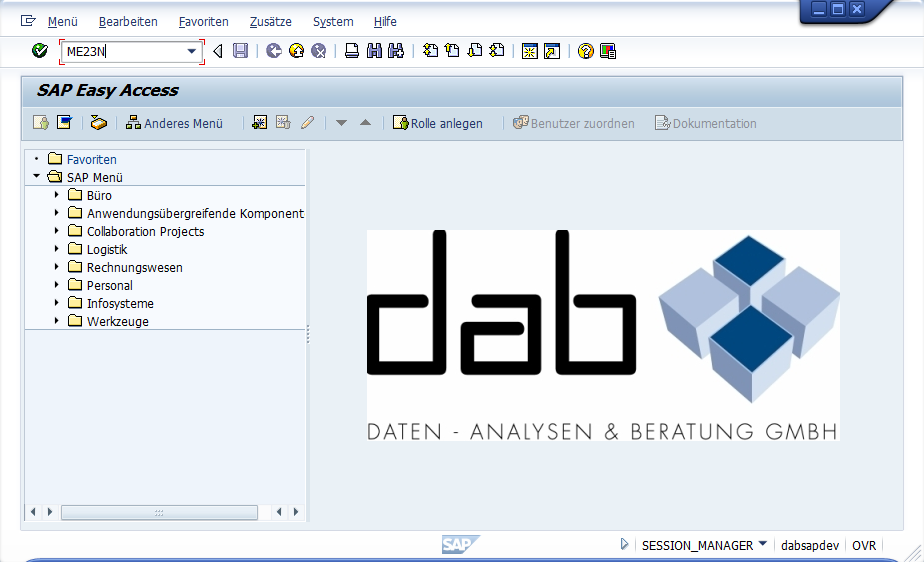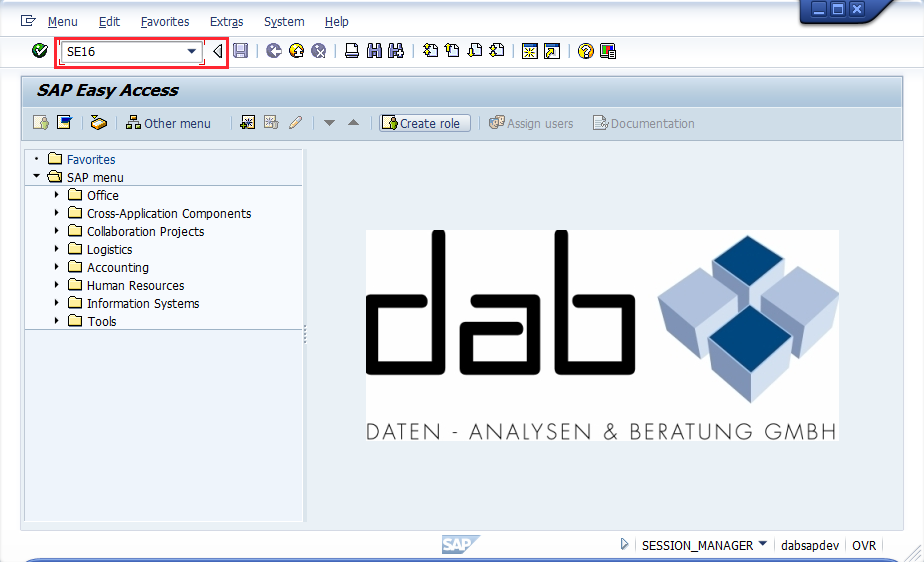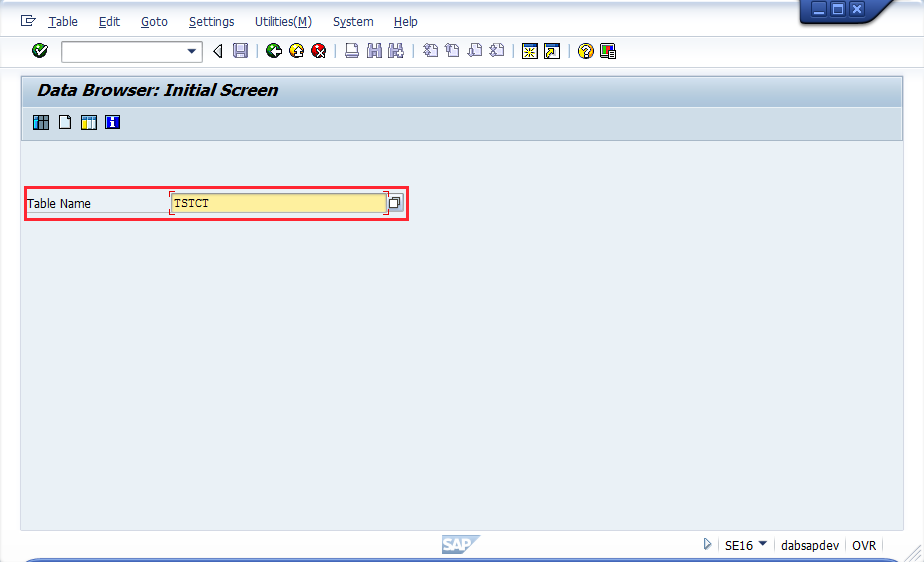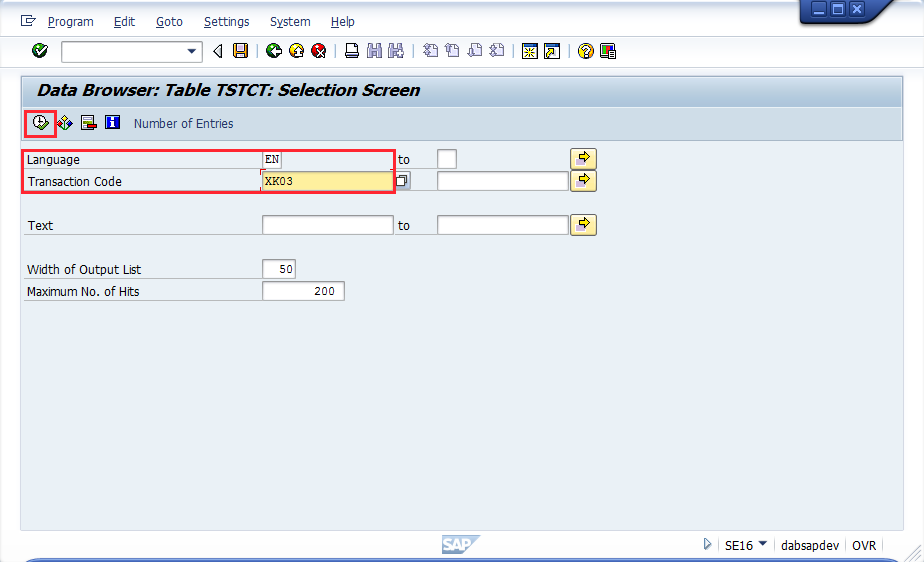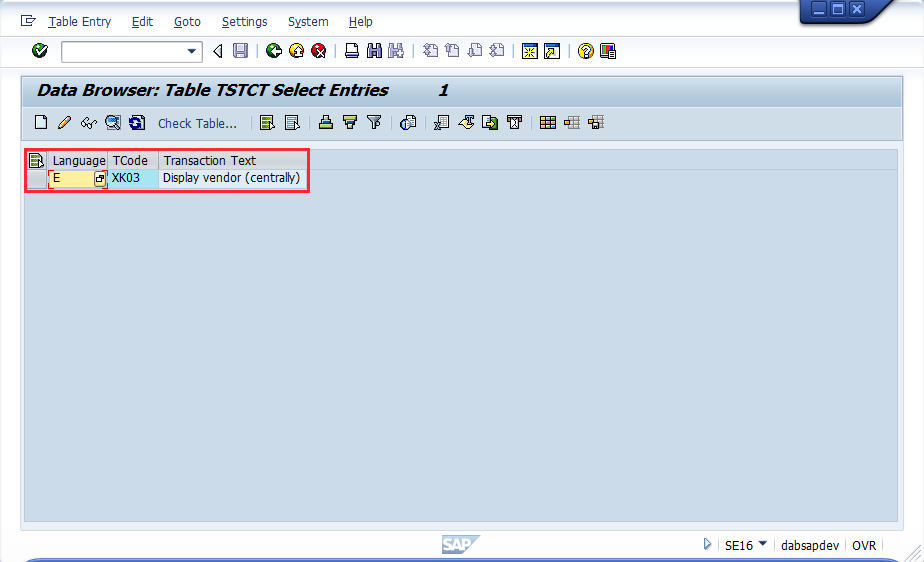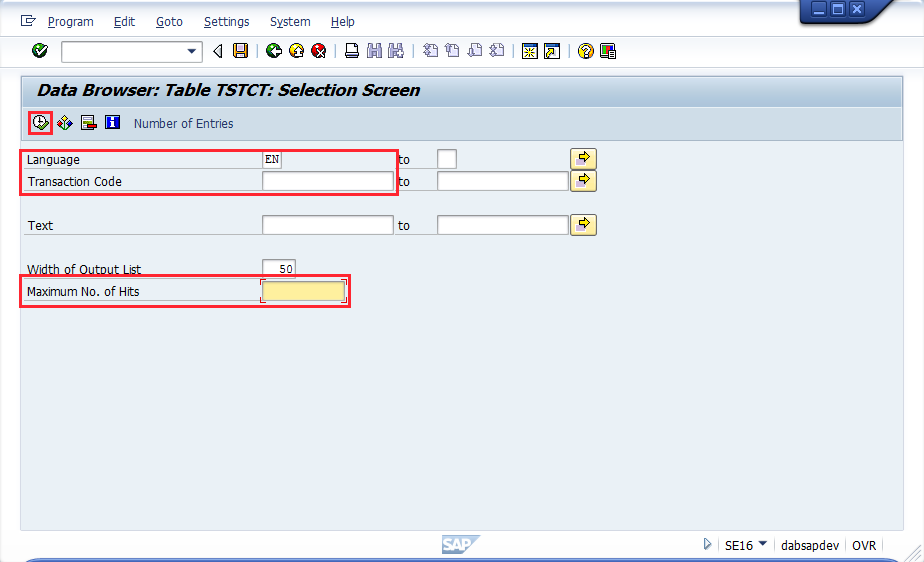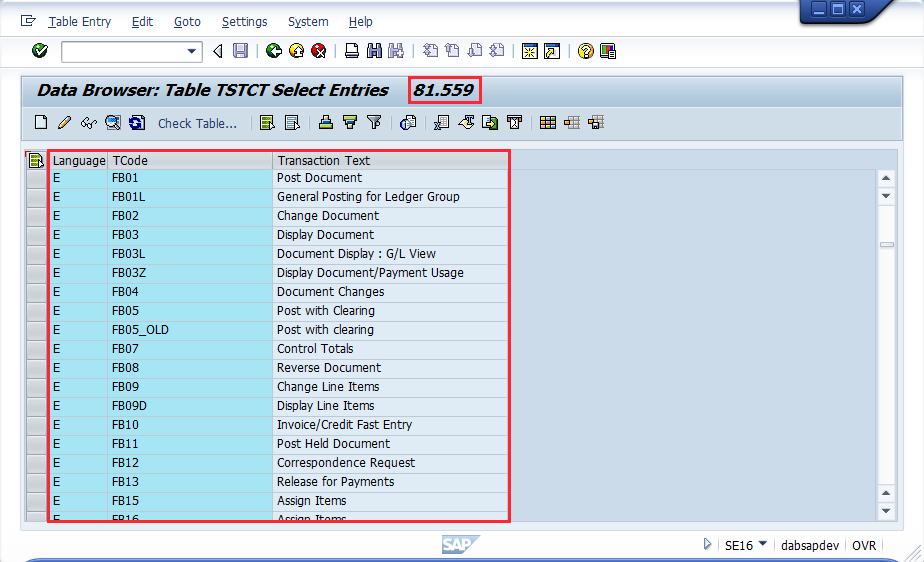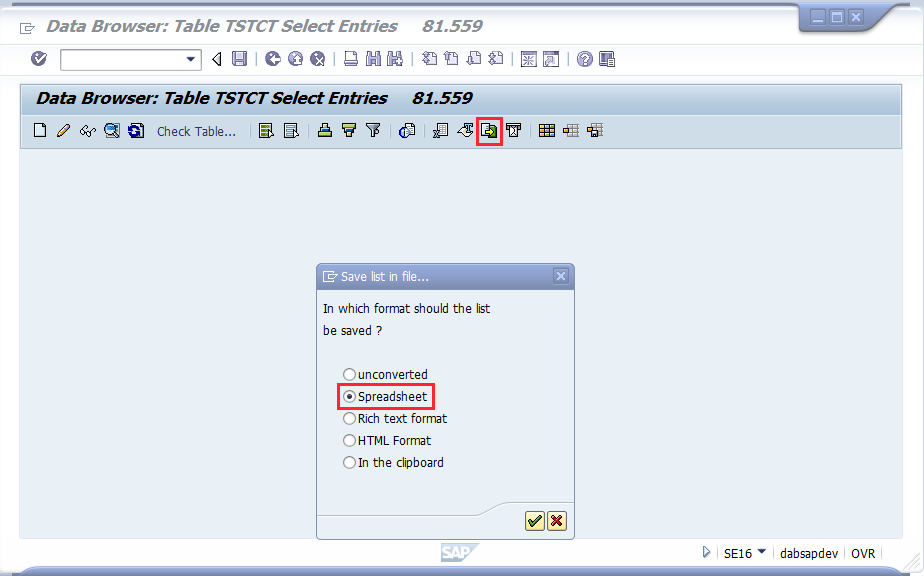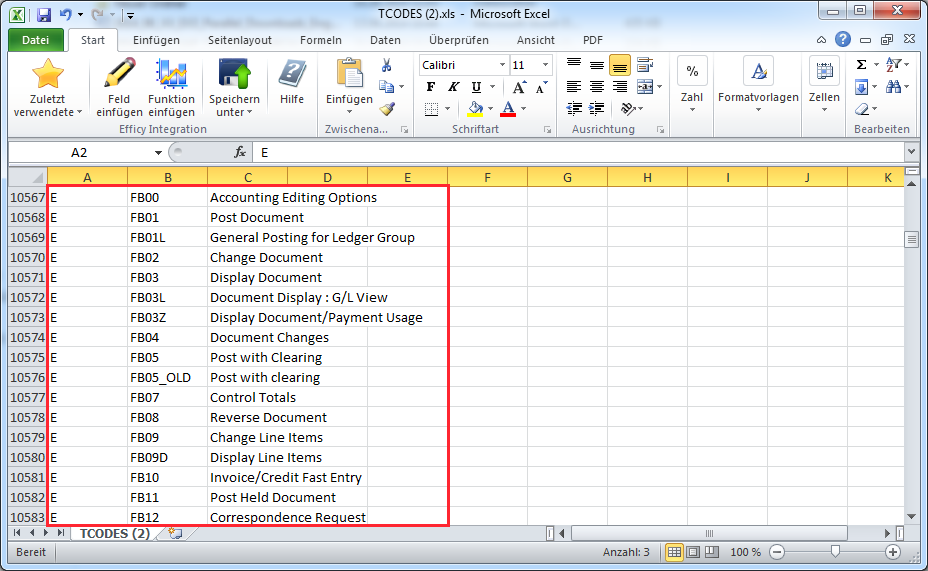Find your way in SAP® Transaction codes (2)
This is the second article about two ways of searching for a certain SAP® transaction code (“T-Code”) or it’s meaning in SAP®, respectively how you can create a list of all T-Codes that are available on your SAP® system.
The first article was about the SAP® transaction “SEARCH_SAP_MENU”. Now I will give you a second example, which is based on an actual SAP® table. To make use of that trick you need to have at least transaction SE16 for using the data browser in SAP®, or you download the data directly with dab:Exporter, and look at it in ACL™.
The steps necessary are as follows:
When using SAP®, transaction codes can be entered directly in the commando field in the upper left corner of the screen. In the following screenshot I entered transaction ME23N, which is used for displaying a vendor purchase order.
As long as you know what T-Code you need, it is easy. However sometimes you might have to dig into a new topic, without knowing any SAP® transaction code at all, so research might be required.
SAP® is based on a huge database which contains a lot of tables. Luckily these do not only contain business transactions – there is a lot of customizing and SAP® system information stored as well, like for example the list of SAP® T-Codes.
They are stored in table TSTCT, and can be displayed using the SAP® data browser SE16 or SE16n. (Sidenote: My colleague Florian Popan recently published a blogpost about downloading with SE16 – you might want to check it out in this context.)
If you - for example - want to find out what T-Code XK03 stands for, you can do this step by step, starting with entering transaction SE16 to call the SAP® data browser:
Now this is interesting, but usually too limited. Ideally you access not only one but the full list of all T-Codes which are in the system, for example by exporting all table entries to Microsoft Excel™. To do this, you again call SE16, but you do not enter any T-Code, only the desired language key. Make sure to remove the “Maximum number of hits” description to get all table entries displayed.
I hope you liked that little walkthrough.
For any comments on this article, feel free to write us at info@dab-gmbh.de.
To contact the author you can also use LinkedIn or XING (you may have to login first before you can access these links).
LinkedIn: http://de.linkedin.com/pub/stefan-wenig/54/1b8/b30


